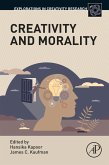Sticky Creativity: Post-It® Note Cognition, Computers, and Design presents the interesting history of sticky notes and how they have become the most commonly used design material in brainstorming, business model generation, and design thinking. The book brings together researchers from psychology, computer science and design in order to understand why and how sticky notes are used, why they work well, and whether sticky notes are replaceable or improvable by a digital counterpart. The book covers psychology, computers and design respectively. From a psychological perspective, cognitive and socio-cognitive theories are used to explain the functions sticky notes serve in idea generation and creative collaboration.
Following sections present the findings from three very different computerized instantiations of sticky notes and discuss the challenges and opportunities that arise when trying to digitize sticky notes.
Following sections present the findings from three very different computerized instantiations of sticky notes and discuss the challenges and opportunities that arise when trying to digitize sticky notes.
- Highlights the benefits of sticky notes in idea generation and creative collaboration
- Explores the use of sticky notes in a variety of creative, design professional and educational settings
- Includes research perspectives from cognitive psychology, computer science and design studies
Dieser Download kann aus rechtlichen Gründen nur mit Rechnungsadresse in A, B, BG, CY, CZ, D, DK, EW, E, FIN, F, GR, HR, H, IRL, I, LT, L, LR, M, NL, PL, P, R, S, SLO, SK ausgeliefert werden.









